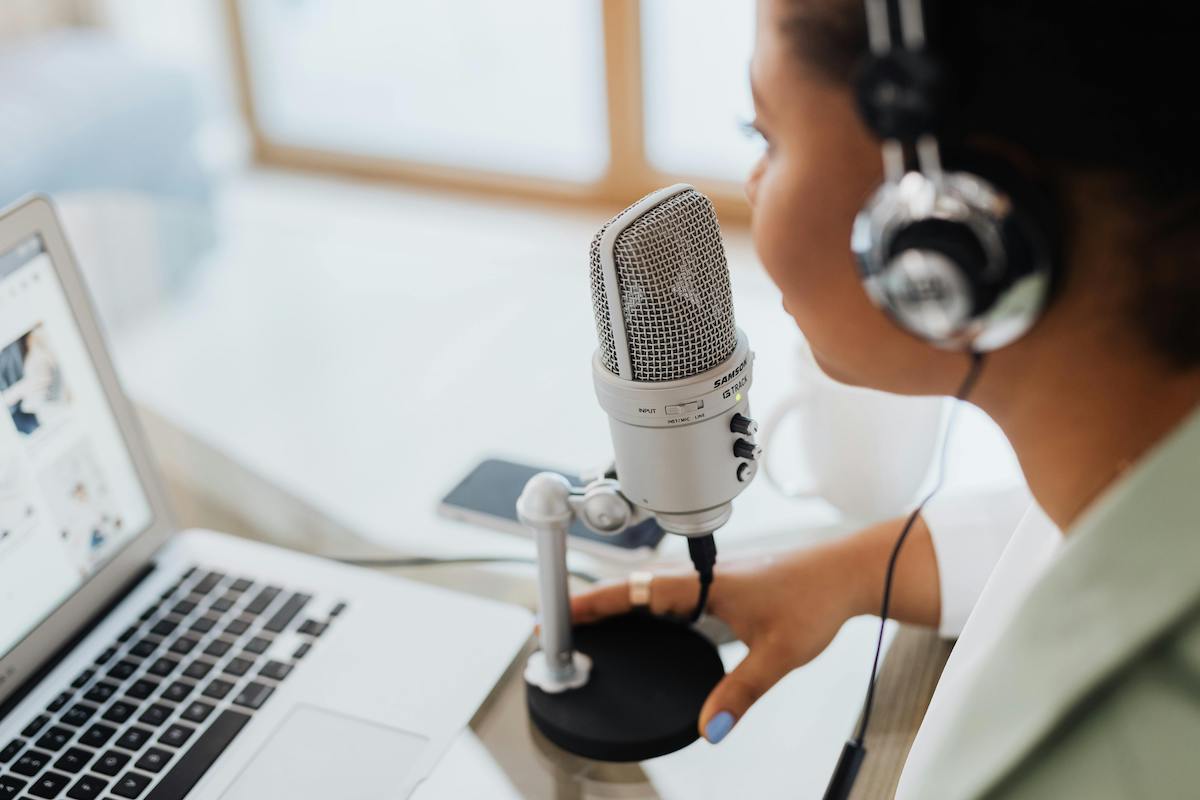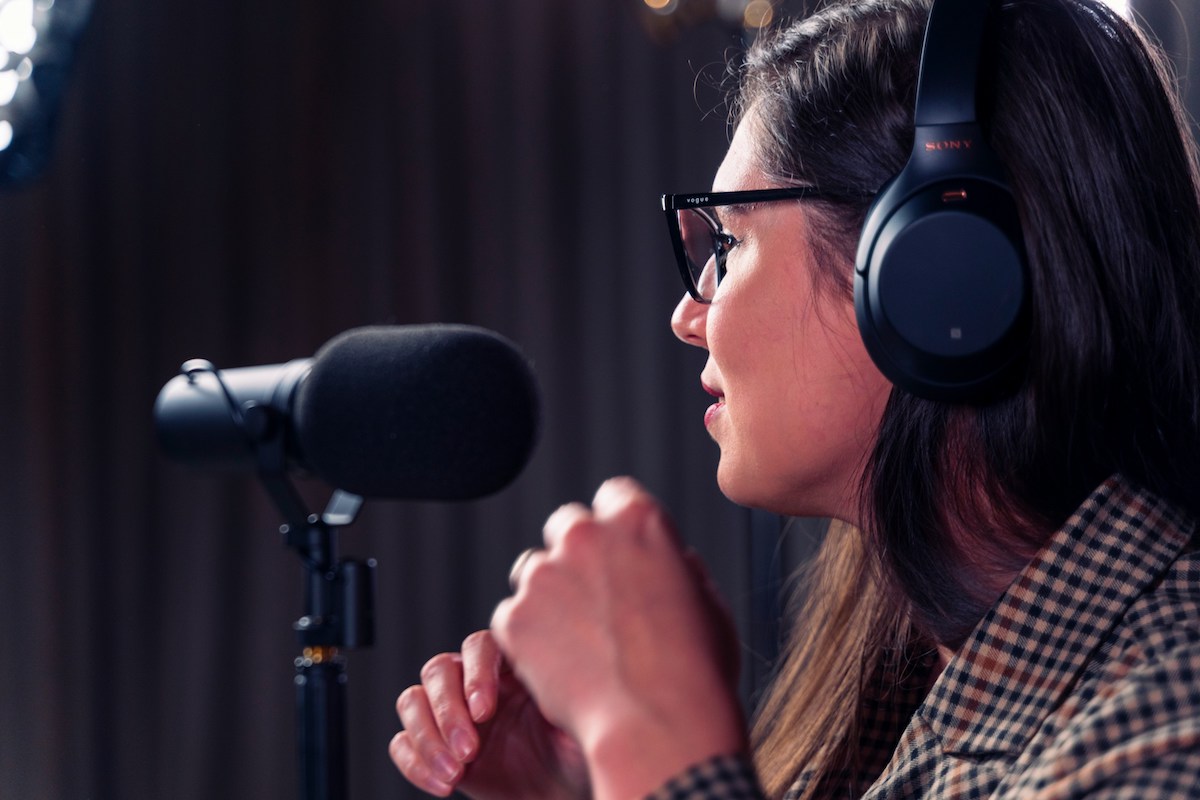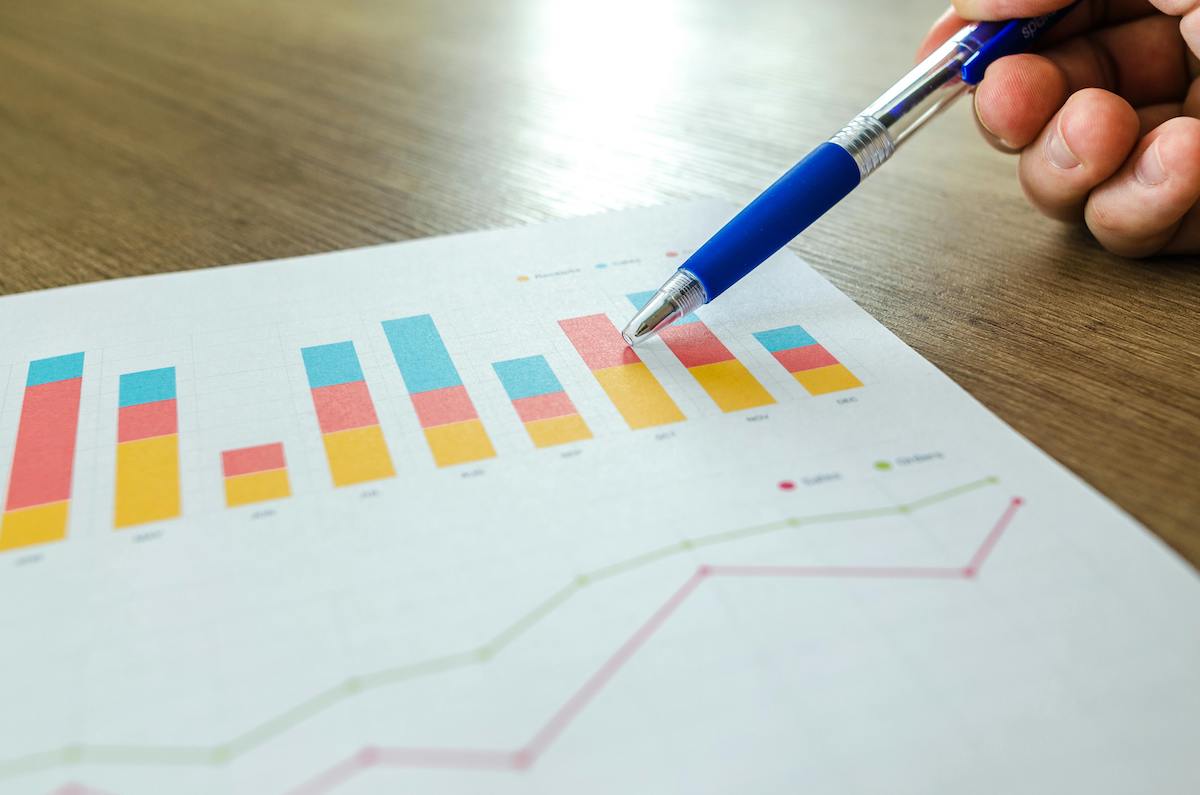Are you interested in landing your first podcast sponsorship deal? Podcast sponsorship is one of the best ways to make money podcasting. Here, advertisers pay to promote on your show in return for access to an engaged audience.
Sponsorship is a win-win situation. While brands have a direct line to a super-focused audience that is interested in their niche, podcasters get financial help to run and grow their show. Whether you are a podcasting pro or just starting your podcast, getting a podcast sponsorship agreement can transform your show and make it a success.
Find out everything you need to know about podcast sponsorships below. We will go into the different kinds of podcast sponsorship deals you can make, and we will also help you identify typical sponsorship rates and outline the steps you need to take to draw up a solid podcast sponsorship proposal.
Start your journey to land the best podcast sponsorship and maximise the revenue power of your show!
What Is Podcast Sponsorship?

Podcast sponsorship is a monetization strategy where brands pay podcasters to advertise their product or services. Usually, this happens via pre-recorded adverts placed at different places in the podcast. They could be read by the host (host-read ads) or pre-recorded ads.
Sponsorships give companies access to an engaged audience in their niche and let podcasters create income without directly billing their listeners. There are a few more plus points to a podcast ad campaign for both podcasters and companies. We’ve listed out a few for you below:
|
Podcasters
|
Brands
|
|
Steady Revenue Stream
|
Engaged Audience
|
|
No Paywalls
|
Niche Targeting
|
|
Credibility
|
Authenticity
|
|
Growth Opportunities
|
Long-Term Exposure
|
We are focusing on podcast sponsorship here. But there are many other ways to make money podcasting.
Types of Podcast Sponsorship
Now that you know what podcast sponsorship is, let's deep dive into the different types you may encounter.
There are generally four different types of podcast sponsorship.
CPM - Cost Per Mile
CPM, cost per mile, is the most common pricing structure in podcast advertising. Typically, brands pay a specific rate for a certain number of downloads generated by one episode within a month. For instance, if you and your sponsor agree on a $30 (cost) per-mile rate, where a mile equals 1000 listeners, you'll earn $30 for each 1000 downloads generated. This can be a bit more complicated, however, because podcast episodes have an indefinite lifespan, so your episode could generate thousands of downloads even after a month has elapsed. Therefore, it is crucial to clearly state the life span of each episode when negotiating your sponsorship agreement, and for how long in the future you will get paid. So, questions to ask yourself are:
- Will I charge the sponsor for the downloads generated after 30 days?
- If I don't charge the sponsor for the downloads generated after 30 days, should I still keep the ad in the episode?
To solve these questions, it would be a lot easier to sell the entire podcast catalogue instead of a series of episodes. Not only will this solve the one-month issue, but 100 episodes could generate over 50k in downloads a month, which could significantly increase your earnings and provide more exposure to your sponsor. After all, loyal fans love binge-listening.
Standard industry fees vary depending on the ad placement. We’ve looked into rates provided by Gumball to give you a rough estimate:
|
Ad Placement
|
Typical CPM Rate ($ per 1,000 downloads)*
|
|
Pre-roll (15–30 sec)
|
$10 - $15
|
|
Mid-roll (30–60 sec)
|
$20 - $40
|
|
Post-roll (15–30 sec)
|
$10 - $15
|
CPA - Cost Per Acquisition, aka Cost Per Action or Affiliate Program
In CPA models, sponsors would pay a percentage per sale generated. Sponsors typically provide a referral link or a unique code for you to add to your show notes and promote during the episode. For any sales generated, you would receive a one-time or lifetime commission. Generally speaking, e-commerce partnerships pay between 10% and 30% for each transaction.
This model is ideal for small podcasters, offering no risk for the creator and sponsor. However, in this case, the creator has little more to lose, especially if the sponsor can not close the deals you send to them. In this scenario, you, as the creator, can send over leads to the sponsor, which is valuable in itself, and if they do not close the transaction, you, the creator, won't be paid, and the brand still benefits from the exposure.
So, lower barrier of entry, but there are disadvantages.
Saspod has its own affiliate program, which you can join today. Our affiliate program pays lifetime commissions, which means you'll earn commissions as long as the client stays with us.
Flat Fee
Some sponsors might prefer to have a fixed payment rather than deals based on CPM. This is typical of specialised podcasts with extremely active listeners, even if their total download counts are smaller. In this case sponsors would pay a flat fee to be placed on a sepcific episode or a series of episodes.
Flat free rates can range from $100 to $2,500 per episode. They are dependent on the following variables:
- Listener loyalty and audience involvement
- Brand applicability to the niche of the podcast
- Exclusivity, that is, exclusively highlighting one sponsor each episode
Branded Content
Some brands may be interested in being featured during a full episode. In a branded content model, you would typically interview the founder of the company about their product or service, indirectly promoting it to your audience. Depending on the popularity of your show, speciality, length and degree of brand integration, and whether the sponsor obtains exclusivity, you can make some serious money doing this.
Branded content deals usually fall between $300 - $10,000+.
Baked-in vs. Dynamic Ads
Recorded as part of the episode, baked-in ads stay with the content forever. For brands, they offer long-term exposure. However, over time, they can become dated and irrelevant. For podcast listeners, this kind of podcast advertisement usually strikes as authentic.
Dynamic ads let podcasters sell their ad spaces frequently and give sponsors far more freedom. Using podcast hosting companies, like Transistor or Podigee, they are positioned within a podcast episode and can be changed after the episode has been released at scale.
Depending on your podcast sponsorship agreement, dynamic ads can be altered or spun through several episodes on one deal.
Host-Read or Produced Ads?
The preferred and most successful form of podcast advertising is host-read ads. This is precisely as straightforward as it sounds. The podcast host reads the advertisement in their own voice and manner.
Because listeners believe the podcaster's advice, host-read commercials typically have greater conversion rates. Though they should fit the natural tone of the podcast host, they can be scripted or semi-scripted to make sure key points are highlighted.
So what about produced adverts?
The brand or a production crew could create pre-recorded adverts. As expected, these adverts turn out very polished and sound professional, but that's their downfall. While they are slick, they often feel less genuine and lack the authority of a host-read advertisement.
Ad Placement
Ad placement is important, and chances are, sponsors will specify what they want in your contract. There are three options: the start, middle, or end. We call these pre-roll, mid-roll, and post-roll ads.
Pre-Roll Ads
Pre-roll ads are placed at the beginning of the episode – you may have already guessed that! Usually running between 15 and 30 seconds, these are quick clips.
Though some listeners may ignore them and perhaps skip them entirely, they are less disruptive and are starting to become more favourable.
Mid-Roll Ads
Mid-roll ads are set inside an episode at a natural content break. Usually lasting 30 to 60 seconds, this kind of pre-recorded commercial is where the host might say something like:
"Ok everybody, we’re gonna have a little commercial break. We'll be back in just a bit to carry on the discussion and find out x, y, z. [Mid-roll ad]... Welcome back! So Jane... Could you tell us about the most important turning point in your sporting career?”
IAB found that this is the most effective placement of podcast advertisements in a study into U.S. podcast advertising revenue. Over 60% of respondents consistently choose ad placement partway through podcast episodes.
Post-Roll Ads
Finally, we have the advertisements that play at the end of the podcast episode. We don't recommend this placement.
Usually a 15 to 30-second clip, this ad ends the show. This is the least helpful arrangement for brands since listeners may not make it all the way to the end.
8 Steps on How to Get Podcast Sponsorship

Step 1: Build Your Audience
Podcasts with an engaged audience appeal to sponsors more than just high download counts. After all, they want your audience to bite! Therefore, a smaller but highly active audience is worth more than a big, bored one.
Sponsors might find more appeal in a specialist podcast with 5,000 very active listeners than in a generic podcast with 20,000 casual listeners.
Start motivating audience participation and persuading listeners to post reviews, join social media conversations, and attend Q&A events. All of this takes time, so stay consistent, and soon you will start to notice your audience becoming more engaged.
Of course, building your audience also depends much on consistent episode publication. A regular calendar helps your audience to trust your show, which will attract those sponsors.
Step 2: Design a Podcast Media Kit
Think of a podcast media kit as a CV or resume. It explains the reasons sponsors should collaborate with you and needs to look good while being easy to read. We recommend preparing a well-designed PDF or even a dedicated landing page on your podcast site.
A media kit for a podcast sponsorship proposal should include:
- Overview of your podcast. Outline everything, from the subject and target audience to your USP.
- Listener demographics. Potential sponsors will need to know details on age, location, and interests of your audience.
- Average downloads per episode and listener retention. You can find your download statistics and engagement metrics through your podcast hosting platform.
- Past sponsorships (if any) and testimonials from brands you’ve worked with.
- What are you selling? Clearly state what ad spots, price, and sponsorship choices you are offering.
Step 3: Do Your Research
Not every brand will be suited for your podcast. Research pays off and saves time in the long run. Firstly, ensure that your target audience fits the sponsor's customer profile. For example, if your podcast is in the "Mental Health" niche, it would make sense to approach a brand like "Better Help" for sponsorship.
You can look at other podcasts within your niche; however, you may not land the same sponsors, but you can get an idea of the type of businesses within your niche that are willing to engage in podcast advertising. You can use tools like Listen Notes or a podcast sponsorship database like Sponsorable to do some marketing analysis.
Once you have identified some potential prospects, you might want to add them to an "sponsorship opportunity list" using a spreadsheet. Include names and contact details of the decision makers, to find these, you can use a tool like Crunchbase or Rocket Reach.
Step 4: Approach Sponsors Using a Strong Pitch
Once you have your list of potential sponsors, the next step is to send a convincing pitch. Making direct contact is the easiest way to go about it.
Your pitch for podcast sponsorship needs to be professional, transparent, and clear.
Hi (Decision Maker's Name)
My name is (Your Name), and I'm contacting you regarding a potential sponsorship opportunity on (Your Show Name).
Our audience is interested in (Your Podcast's Niche). We have researched your brand, and we believe your customer profile would fit our target audience.
A few facts about the show:
- We generate 50.000 downloads monthly
- We have a highly engaged audience
- Our podcast is produced professionally by a podcast production company
- We have multiple ad placement options that would fit any budget
We are interested in engaging in a win-win partnership, and we genuinely believe that we can bring value to (Sponsor's Brand)
I have included our Podcast Media Kit in the attachments.
Please let me know if you are interested, and if you have any questions.
Kind Regards,
(Your Name)
How should you set up your outreach email?
- Start with a personalised introduction. Say why you are contacting this particular brand. Have you been using their product for a while? Tell them about it and connect with them.
- Next, move on to your listeners and highlight how they are the target audience for the brand. This is where you can include audience demographics.
- Big up your achievements. It is vital to share analytics and numbers to showcase the potential reach to the brand. They’ll want to know downloads and engagement stats along with any past sponsorship success.
- Clearly outline podcast sponsorship options. If you have a rate card, add it in here. Also, mention what ad spots are currently available.
- Finish with an invitation to chat more. Make this CTA clear and ask, “When would be a good time to discuss?"
Step 5: Utilize Podcast Sponsorship Networks
You can skip step 4 altogether and look at the onboarding podcast ad networks if a direct outreach seems too much like work.
Linking podcasters with advertisers, podcast advertising networks serve as the middlemen. Now, this route is easier, but you could give away a percentage of your revenue; in some instances, up to 30%. This may be a price you are willing to pay, but 30% is still a big chunk of your podcast's revenue.
Top networks for podcast sponsorship:
Think of them like Hinge. Helping you find the perfect match for your podcast!
Step 6: Negotiate a Podcast Sponsorship Rate
Sponsors value adaptation. So, giving flexible package deals is definitely advised! You can customise your offers to match several budgets rather than a one-size-fits-all solution. Tiered pricing is a neat and fair way to provide several sponsorship tiers.
Bundles of deals consist of podcast commercials accompanied by other promotions (such as email newsletter mentions, social media shoutouts, and so on).
Short-term podcast sponsorship agreements can be run on a trial basis, so you don't need to force the sponsor into a long-term commitment immediately. This allows you to gather stats to support a long-term deal later on.
Step 7: Do The Work!
Your work isn't done once you find a sponsor! In fact, it’s just begun.
Now, you need to make sure your podcast is producing high-quality adverts that benefit your listeners as well as your sponsor. You must keep your sponsor pleased! Sponsors are more likely to come back for future campaigns if you produce an outstanding job first time round.
Make your host-read ads interesting. Rather than reciting a dull script, tell a personal tale about the product. And make sure the integration is flawless; adverts should seem like they fit your show naturally.
Remember to monitor your ads' performance. This gives sponsors listener comments, measurements of interaction, and any relevant data. This knowledge will also help you write your next podcast sponsorship proposal.
Steer Clear of These Common Podcast Sponsorship Mistakes

While getting sponsorships is a fantastic method to make money from your podcast, blunders could actually cost you money and sour ties with advertisers.
Here are the most common mistakes made in podcast sponsorship deals:
- Selecting sponsors outside your audience.
- Overloading episodes with adverts.
- Unauthentic delivery.
- Underpricing yourself and agreeing to low rates.
- Not collecting performance metrics.
- Ignoring long-term opportunities.
- Having an unclear agreement.
Let’s look at each of these in a bit more detail.
Selecting Sponsors Outside Your Audience
Accepting sponsorships from companies that contradict the main interests of the podcast is a fatal error! If the product or service is irrelevant to your audience, then why would they engage or listen to any CTA’s?
Fall into this trap, and you will not only lose your audience, but your sponsor will not get a return on investment.
How can you avoid this common pitfall? Only work with companies whose target market and niche fit your podcast. This is a relationship you are building, and you need to be a match.
Overloading Episodes With Adverts
Too many adverts in one episode will turn listeners off and give the content an unduly commercial feel. Should advertising be too frequent, listeners may begin to skip or tune out completely. This is something you want to avoid at all costs.
Maintain an appropriate ad-to-content ratio. Most effective podcasts let advertising run one or two times per episode, max!
Unauthentic Delivery
Though they are strong, host-read ads won't appeal to listeners if they sound forced. You may even alarm some of your audience with a hostage style delivery!
Host-read ads need to have some of the host's personality added in. This could come through as a share of experiences, testimonials, or a creative narrative to personalize sponsorship messages.
Underpricing Yourself And Agreeing To Low Rates
Some podcasters embrace low sponsorship rates and totally undervalue their audience. It’s hard to start increasing rates, and long-term underpayment adds a strain to your bank balance.
You are valuable! Work out a podcast sponsorship rate that reflects that.
Not Collecting Performance Metrics
Sponsors want data on how their commercials fare. Therefore, not providing data might make renewing arrangements more difficult.
Showing ROI (return on investment) requires metrics. Your sponsor will want stats on downloads, listener interaction, and promo code redemptions. Track all of these along with click-through rates using trackable links.

Ignoring Long-Term Opportunities
It can be easy to concentrate all your efforts on one-off transactions instead of looking for long-term sponsorships. But continuous income and, with time, improved brand integration come from regular sponsorships.
You can offer cheaper bulk rates, perhaps a three-month sponsorship rate, to motivate longer commitments.
Having An Unclear Agreement
Unpaid bills or misalignment of goals typically result from informal agreements or verbal commitments. You want to avoid this, quite naturally.
Use a podcast sponsorship agreement and include payment terms, ad placement and length, performance requirements, and exclusivity provisions.
Are You Ready For Podcast Sponsorship?
Podcast sponsorship is a good way to make money podcasting. It lets companies interact with your active audience while you get a financial kickback. Understanding the many forms of sponsorship, negotiating a good rate, and creating a strong sponsorship proposal can help you to draw in appropriate sponsors and foster long-lasting working relationships.
You need to be proactive to be successful. Don’t wait for podcast sponsors to approach you. You need to go out there and find the opportunities.
If this is too much to take in on your own, call in the big guns. Saspod is here to assist you if you need professional advice or are confused about where to start. Our team of podcast experts brings the knowledge you need!


Comments
No comments yet!